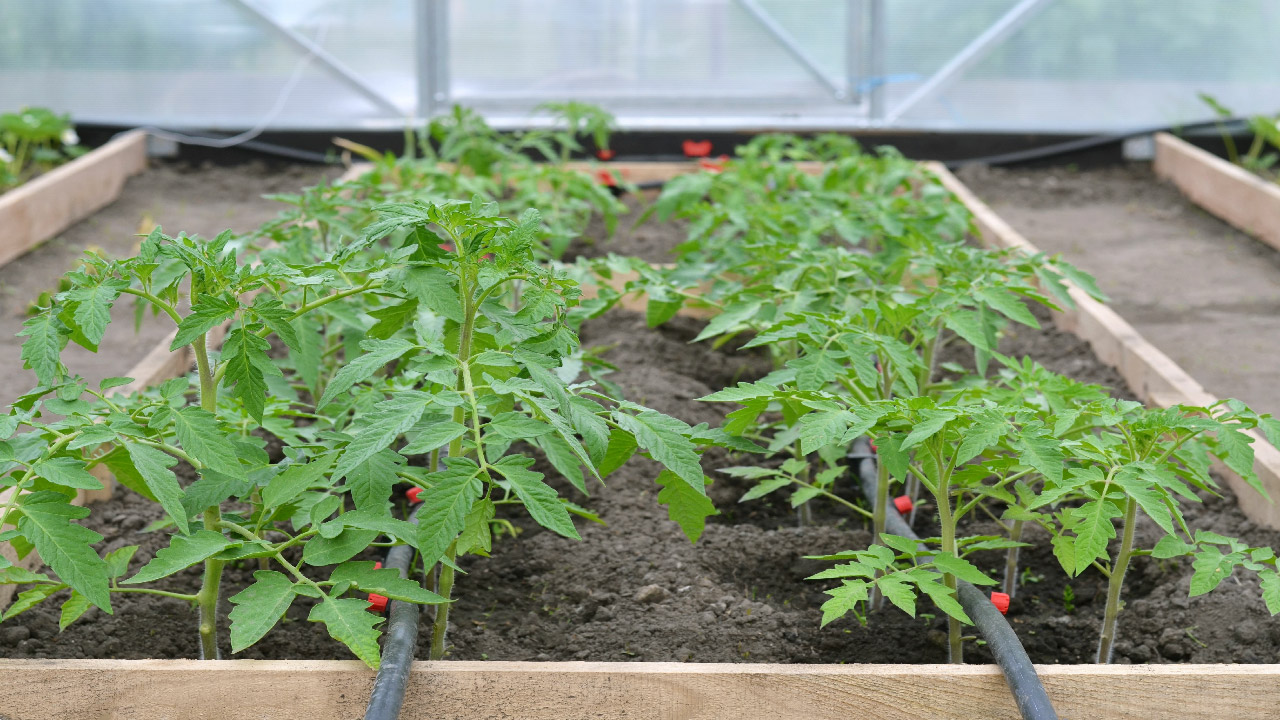How to Install Drip Irrigation in a Greenhouse
Feb 1st 2024
Greenhouses offer an ideal environment for crops to ripen on time and extend the growing season. The perfect temperature regime, watering, and standard lighting make this possible. However, efficient irrigation is a crucial component of maximizing greenhouse productivity.
The drip irrigation system is the most preferable and effective method to irrigate greenhouse crops because it delivers precise amounts of water directly to roots, and this system is scalable to any size.
Installing a drip irrigation system in the greenhouse is simple and affordable. This article outlines the step-by-step process to install drip irrigation in a greenhouse. Read on to find all you need to know about DIY greenhouse drip irrigation.
Why is Drip Irrigation the Best Watering System for a Greenhouse?
Drip irrigation is a highly useful watering system for greenhouses of any size. The drip system is an efficient low-pressure system that slowly releases water through tubes to plants' root zones, keeping their roots moist without soaking the soil.
A plant requires enough air to develop properly, the ideal ratio of air and moisture promotes proper plant development.
Moreover, drip irrigation systems use less water compared to other methods, which saves money and energy. Also, it eliminates diseases that spread through water contact with leaves.
Things to Consider Before Installing Drip Irrigation in a Greenhouse
First, design the layout of your system. Evaluate the greenhouse structure and consider the location of plants, raised beds, and pathways. In addition, determine the water pressure and flow rate from your water source to choose the right emitters.
Take the necessary measurements and perform calculations, such as the required length of tubing, the number of fittings, and the number of emitters.
A drip irrigation system uses less water than other irrigation methods. A key to an effective drip irrigation system is applying small amounts of water slowly and as often as needed to maintain soil moisture at a consistently high level. Water application rates may range from 0.15-0.23 inches per hour or 1.6-2.4 GPM per 1,000 square feet of each greenhouse section. Moreover, short-operating cycles like 15 minutes on and then 15 minutes off give the water more time to absorb into the soil and equalize its moisture.
Materials and Tools Required for DIY Greenhouse Drip Irrigation
The first and foremost thing in installing your drip irrigation system in the greenhouse is knowing the materials and tools you will use for building the system. Here are the required components for a drip system.
- Filter
- Pressure Regulator
- Connectors and Fittings
- Mainline Tubing
- Timer
- Emitter/Drippers or Drip Lines
- Hold down stakes
- Punch tool and cutting tool
Step-by-Step Process to Install Drip Irrigation in a Greenhouse
Let's discuss how to build DIY drip irrigation for your greenhouse.
- The first step is to connect the timer, filter, and pressure regulator to a water source to provide water to your greenhouse. The filter will help prevent emitters from clogging. Install the pressure regulator to maintain the ideal pressure level for the drip system.
- Connect the header line to the system start fitting, using the connector and create a tight seal. The mainline tubing will deliver the water to all emitters and drip lines. Use tees and elbows to place the header line as needed. Use an end fitting to end your rows and mainline.
- Make sure the mainline reaches every plant in your greenhouse. Use the emitters to water your plants or run Drip Tape down the length of your row crops to provide precise watering. Drip Tape has small emitters pre-installed so there is no need to punch holes and install emitters manually. Drip Tape is easy to use for rows or garden beds.
- Secure the drip lines and header lines using hold down stakes.
- Once you have placed the driplines and secured them, test the system. Turn on the water slowly and check for leaks. Tighten the connections and adjust the water pressure if needed.
Now that you have successfully installed the drip irrigation system for your greenhouse, it is wise to monitor it for a few days to ensure it is running effectively.
Conclusion
The drip irrigation system is the most effective and popular watering method for greenhouses. It allows you to irrigate your greenhouse crops effectively, accurately, and sustainably. The drip system delivers optimum water and nutrients directly to the roots of plants, reducing evaporation and wastage.
The steps above-mentioned can help you successfully install a greenhouse drip irrigation system. However, choosing high-quality drip irrigation components for your greenhouse is crucial. Thankfully, you don't need to go anywhere else for them. DripWorks offers premium quality drip irrigation kits and individual drip irrigation components for greenhouses.
At DripWorks, we also offer a quality selection of greenhouses and high tunnels for gardens and farms that can extend your growing season and boost your yields. These structures are available in a variety of shapes and sizes. Explore the best-class collection of greenhouses and high tunnels!

